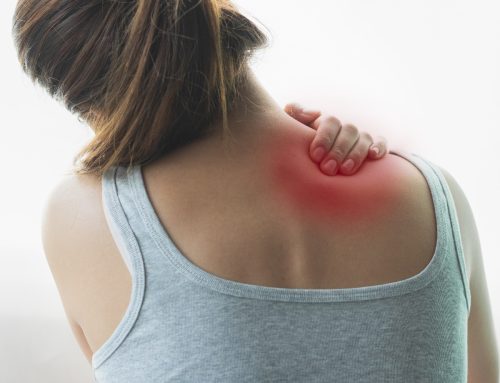Joint pains tend to start or even recur during the winter season. Arthritis in cold weather can be quite harrowing for many people. Arthritis patients are faced with nagging and at times, unbearable pain in their knees, ankles, hips, etc, which restricts their mobility.
Knee pain in cold weather especially is a common condition. Muscles tend to feel more contracted and tense during the winter season. As a result of the strain, the joints may become less pliable and mobile. Another reason for winter joint pain is a lack of Vitamin D due to limited exposure to sunlight.
Arthritis in cold weather is experienced because blood flow is directed around the heart to keep it warm, as a result of which blood flow towards the legs and hands is reduced. Stiffness in the joints and intrusive pain are experienced by people, especially people above 45 or 50 years of age. Thus, it is important to tackle winter joint pain and possibly, prevent the ache from cropping up in the first place.
Effective ways to manage joint pain in winter
- Keep moving and do exercises daily – Whenever you work out, your body produces more synovial fluid, which acts as a lubricant for your joints and keeps them from creaking or causing pain. There is smooth blood flow to the peripheral areas of the body, which reduces the onset of stiffness or pain. It is important that you warm-up before exercising so that you minimize any chance of injury or muscle sprain. If you do not have the time to work out, aim to do brisk walking for 25 to 30 minutes every day.
- Boost your Vitamin D – Vitamin D is vital for bone and joint health. It optimizes the absorption of calcium and phosphorous in the body, besides boosting your immune system. Sunlight is the biggest source of Vitamin D. Almost 75 percent of people in the world are Vitamin D deficient. This has been compounded by COVID-19, when people remained indoors for prolonged periods. During winter, joint pain increases due to lack of exposure to sunlight, the biggest reserve of Vitamin D. So in such a scenario, make sure you take a Vitamin D supplement once a week, or as directed by your physician. Other dietary sources of Vitamin D include egg yolks, oily fish like salmon, sardines and mackerel, liver, and red meat.
- Increase your Vitamin C and Vitamin K levels – Apart from Vitamin D, Vitamin C and Vitamin K are also important for absorbing calcium in the bones and assisting in cartilage formation. Foods that are rich in Vitamin C are citrus fruits like oranges and lemons, kiwi and strawberries. Foods rich in Vitamin K are green leafy vegetables like broccoli, spinach, kale and cabbage. You may also check with your doctor for Vitamin C and Vitamin K supplements.
- Opt for a calcium-rich diet – Calcium equates to strong bones. Calcium rich foods are milk, yogurt, dry fruits, green leafy vegetables, cheese, seafood etc. And as mentioned before, your body needs Vitamin D to ensure that calcium is absorbed in the best possible manner.
- Wear warm clothing – Wear warm clothes in layers to retain your body heat. This way you can protect your joints during the cold weather, especially when you are travelling.
- Take a warm shower – Warm shower is therapeutic to aching joints and relieves stiffness. Warm bath has also been proven to alleviate stress.
- Drink plenty of healthy fluids – Drink a lot of water and fresh juices, as they can replenish your body with oxygen and nutrients. Avoid aerated, fizzy drinks and too much caffeine because they can affect the absorption of calcium in the body.
- Avoid smoking and drinking – It is obvious that smoking can ruin your health; this also includes your bone health. During winter, one may feel like reaching out for alcohol. But then again, both tobacco and alcohol affect bone mineral density, hastening the onset of arthritis and even osteoporosis.
- Maintain the correct posture – It is very important to have the right posture whether you are standing, sitting or even sleeping. Slouching, or twisting your body can affect your bones. Distribute your weight evenly. If you are carrying a bag pack, balance its weight on both shoulders.

- Go for bone mineral density test – People above 40, especially women, should go for a bone mineral density test. This is done to precisely understand what nutrients and minerals your bones are lacking in, so that your doctor can give you the right dietary advice. It can be quite fruitful to do so, so that you do not have to face the wrath of joint pain during winter.
Winter coincides with the holiday season, which means there is a lot of revelry, partying and travel involved. So, there is a tendency for people to overeat and indulge themselves in alcohol and cocktails. The flip side is that this errant behaviour can cause problems to your bones and overall health. So, we must make sure that we keep our diet in check and exercise regularly, so that we stay happy and in the peak of health, without the fear of incurring any joint pain in winter.
References and Citations
The Influence of Weather Conditions on Joint Pain in Older People with Osteoarthritis: https://pubmed.ncbi.nlm.nih.gov/26329341/
Working in cold environment and risk of developing rheumatoid arthritis: https://rmdopen.bmj.com/content/3/2/e000488
Influence of cold weather on joint health – https://www.uchicagomedicine.org/forefront/prevention-and-screening-articles/its-cold-outside-do-your-joints-hurt





